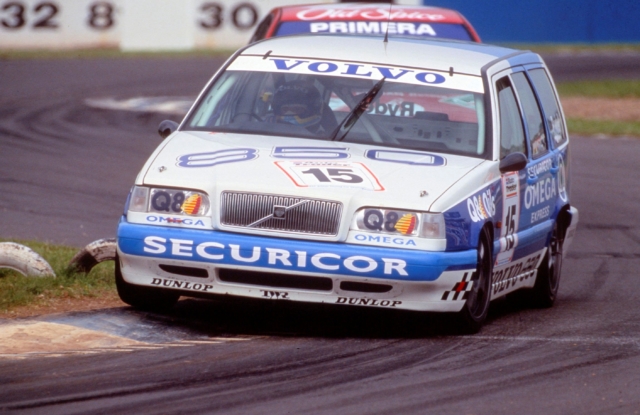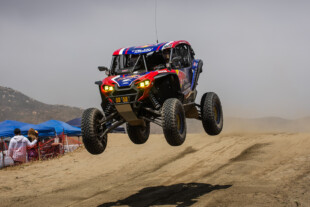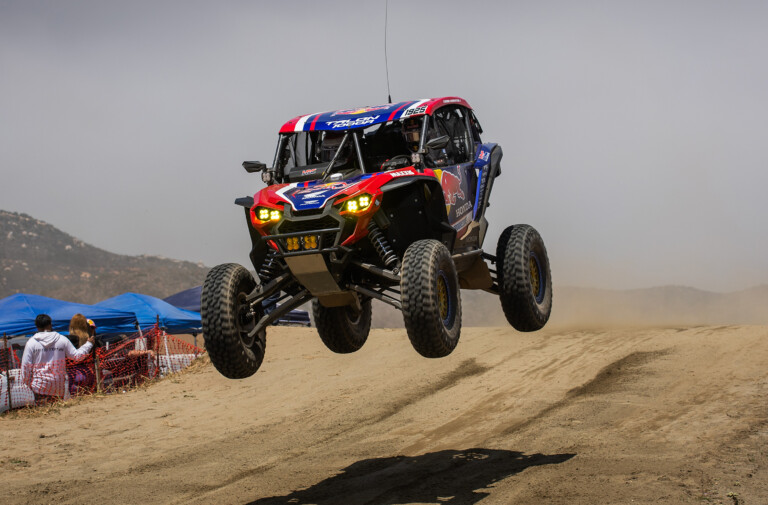Big time touring car racing doesn’t always benefit from the most intriguing machines. Run-of-the-mill econo cars and the odd BMW sedan populate the ranks, but on occasion, the oddity makes its way in, and sometimes, it’s quite successful. This was the case with Volvo’s 850 wagon, a car that was laughed at upon entering the British Touring Car Championship in 1994, but quickly silenced its detractors.
While the wagon had slightly better aerodynamics than the sedan, the reason the platform was selected was to change the public perception of a sedate wagon. Among a fleet of hunkered-down touring cars, a giant Volvo wagon looks totally out of place, and therefore turns heads, especially when it does well. With Tom Walkinshaw Racing fielding the cars and aces Rickard Rydell and former Formula 1 driver Jan Lammers steering them, they managed to outrun some of the lighter Fords and Alfas, as well as irritate some of their drivers. To rile up their competitors, Volvo placed a stuffed dog in the backseat during one of the formation laps.
The 2.0-liter, five-cylinder motor made 290 horsepower at 8,500 rpm, and transferred that power to the front wheels via a six-speed sequential from X-Trac. Not being terribly light at 2,100 pounds, the car took 7.6 seconds to hit sixty miles an hour, which isn’t very quick for a racing car, but the balance of the car was surprisingly good, largely because that wagon derriere helped stabilize the rear at speed. Those hefty haunches had a secondary benefit: they obscured a competitor’s field of vision after being overtaken. As being passed by a station wagon was a huge blow to the many drivers’ pride, and they would bash the Volvo’s rear end in retaliation, which helps explain the dangling bumper in this clip.
Ultimately, the car was not the most competitive, but managed decently. The center of gravity was too high and, being a front-wheel drive, lacked sufficient weight over the front axle thanks to the long rear end. Even with the driver sat in the middle of the car, the weight distribution was too far off for ideal tire wear and rotation.

The dimensions didn’t aid the Volvo’s handling, but they did have a psychological influence on the competition.
The monstrous Volvo was eventually replaced with a smaller 850 sedan for the next season. With aerodynamic regulations instated that would disadvantage the wagon even more, TWR reluctantly decided for a sedan fitted with a large wing at the rear. With this platform change, the Volvo 850 became a success, with Rickard Rydell winning four races and snagging five pole positions, and his English teammate Tim Harvey winning twice. While it wasn’t a title winner that year, the Volvo development continued well onto 1998, when the S40 replaced the 850 and, in the hands of Rydell, finally clinched the title. It was a long, arduous, and widely-mocked road, but the team finally succeeded and managed to deflate some big egos in the process.






















